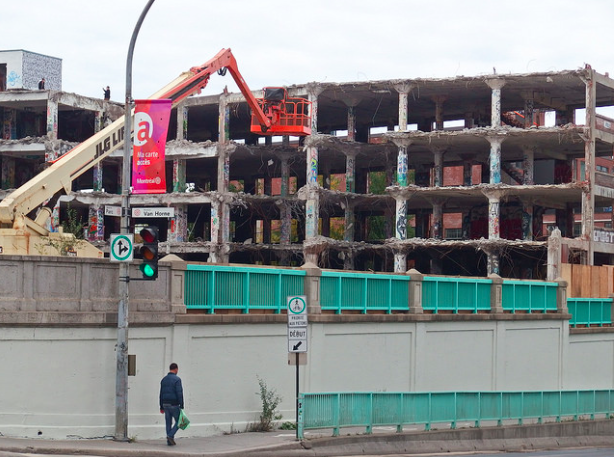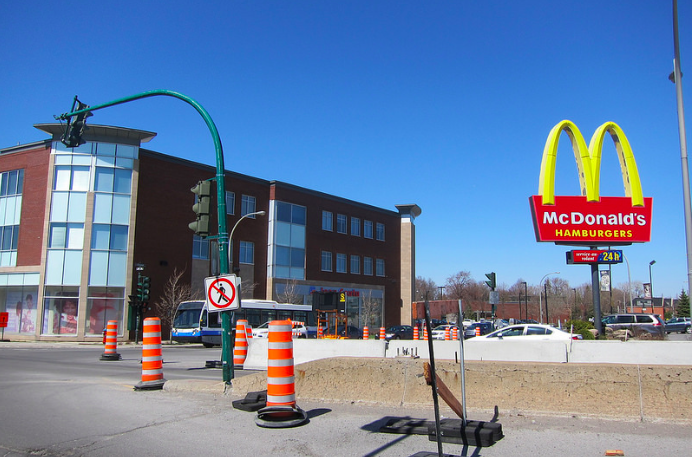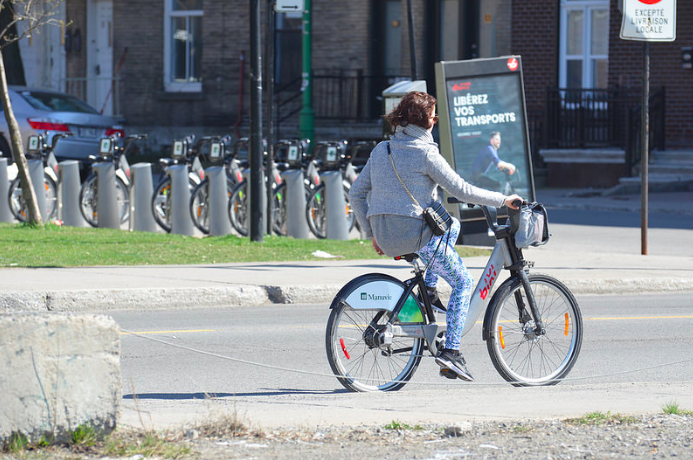A Jane's Walk in Montreal
Zvi Leve
Zvi Leve is a Strong Towns member who lives in Montreal, Canada. He has hosted Jane's Walks for the past three years (and attended many others). In light of our recent coverage of Jane Jacobs and our interview with the executive director of the Jane's Walk organization, I invited Zvi to talk about his experience leading two walks this earlier this month.
Rachel: Tell me a little about yourself and how you ended up involved with Jane's Walks.
Zvi: I have been exploring cities by foot for a long time - probably thirty years now. I'm not sure when exactly I discovered Jane Jacobs, but it probably occurred around the time that I "discovered" urbanism and completely changed my direction in life. I have read most of her books, not only those about urbanism. I am quite educated in certain fields, but I share her disdain for 'expert opinion' which tends to be focused on very narrow topics. Cities are complicated living organisms - they are not something which can be 'optimized' with ever more data."
Rachel: How did you decide on the location for your walk and how it would be structured?
Zvi: I recently bid for a project contract in the areas surrounding a former rail yard, which is being converted into a future university campus. This area has been a massive barrier for four separate boroughs, each one of which has had a different development trajectory due to their particular circumstances. In the preparation for our bid, I spent a great deal of time exploring many facets of the 'study area'. Given my interest in 'streets as public spaces' and the accessibility challenges (and future opportunities) in the area, there were many possible themes and locations to explore. I chose to do two separate walks - one focusing on the 'suburban style' developments in an area which will unfortunately remain 'on the other side of the tracks' and the other focusing on the challenges and changes which will be occurring in the area which will be opening onto the new development. I structured each walk to begin at one metro station and end at another.





The walks were in locations which are not very comfortable for pedestrians, but I had already scouted the areas so I knew good locations to stop and have conversations. I had a friend of mine (who is also a transportation planner who lives in the area) assist with the walks - her role was essentially to help keep us together as a group and to also answer questions. I consider Jane's Walks to be 'walking conversations' (as opposed to one person lecturing to a group) so the important thing is to have a proper balance to stimulate conversations.
Rachel: How did the walks go? Was it a good experience?
Zvi: Both walks went very well. We had approximately 10-15 people on each walk (we gained and lost a few en route!). Lots of interesting conversations, particularly with participants who brought historical knowledge of the areas being explored. One of my goals was to highlight the challenges for pedestrians in the areas which we explored, and that was very much understood and appreciated. A future goal would be working on translating that understanding into pressure to change our built environment to prioritize people over vehicle circulation (and parking).
Rachel: How would you connect your walk to Jane Jacobs’ thinking?
Zvi: The immediate goal of my walks was to explore a relatively human-scaled environment which is nonetheless quite uncomfortable for people. The first walk put into contrast the suburban style development which was dropped down along an industrial fringe in an urban setting. The area will be seeing intense development pressures in the future, yet will remain constrained by the rail corridor.
Jane Jacobs also thought extensively about import replacement and 'local economies', concepts which were extremely pertinent to this area. The new university campus is intended to become a hub of bio-tech industries and the area already includes a number of health clinics and pharmaceutical research centres. The population in closest proximity to this area is one of the most ethnically diverse concentrations of people in Canada, yet few of them benefit from these jobs. Perhaps that is the reason for the massive surface parking lots which keep the residents away from the tech areas....
The second walk was along the boundary of a wealthier area. The particular corridor that we explored has many small and diverse local merchants as well as industrial and mixed use buildings in proximity. It has a perfect mix of scales and densities, yet the area is still struggling under the pressure of heavy road traffic (actually the volumes are relatively low, but the corridor is very narrow and blocks up quickly). We explored the potential of removing on-street parking and taking it off-street to free up precious road space for other uses such as a dedicated bus lane, protected bike lanes, larger sidewalks, etc. Lots of under-exploited space around the industrial areas. Will be interesting to follow how the area evolves as the new campus opens up.
All photos courtesy of Zvi Leve. For more fantastic photos of these Jane's Walks (and cities in general), check out Zvi's flickr page.


